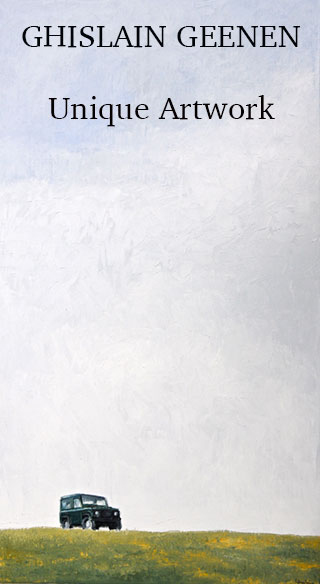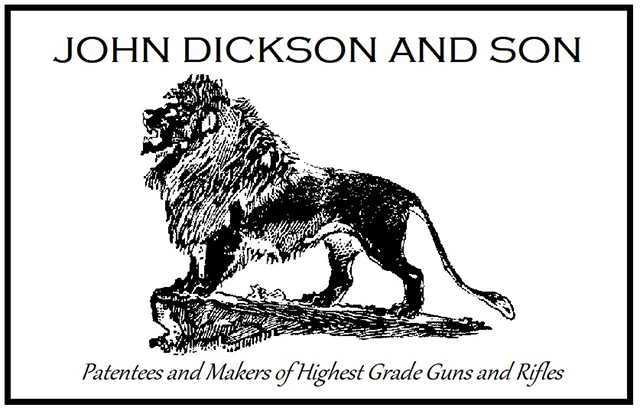An estimated 7,000 to 14,000 lions are held in captivity and bred in South Africa. Increasingly, the animals are slaughtered for their bones and other body parts, many of which are sold in Asia for their purported — and scientifically discredited — health benefits.
BY ADAM WELZ
Reinet Meyer is the senior inspector at the Society for the Prevention of Cruelty to Animals in the provincial city of Bloemfontein, located in the central grasslands of South Africa. In April, she received a tip: Two adult lions had been held for two days without food or water in tiny transport crates on a farm called Wag ‘n Bietjie (“Wait a While” in Afrikaans) about 20 miles outside the city. She went to the farm, found the lions, and discovered that they’d been trucked about 250 miles in the crates from Predators Pride, a “safari park” near Johannesburg that keeps big cats in small enclosures so tourists can get close to them and, for an extra fee, hold lion cubs or cuddle adult cheetahs while having their photos taken.
She then noticed a large pile of rotting, fly-covered meat outside a farm shed. Inside she found a supervisor and about eight workers stripping the skin and flesh from the fresh carcasses of 26 lions, expertly reducing them to clean skeletons. “You could see that it wasn’t the first time they’d done this,” she says. That afternoon a truck arrived with 28 additional lions, which were to be killed the next day. Meyer insisted that the lions be released into a corral rather than be left in their transport crates overnight, as the farm manager had planned to do.
She returned to Wag ‘n Bietjie the next morning to observe that animal welfare standards were being maintained on the farm. A veterinarian arrived at 9 a.m., drove into the newly arrived lions’ corral in a pickup truck, and, as Meyer watched, darted all 28 with tranquilizers. As they lapsed into unconsciousness, he walked from one to the next, methodically shooting each in the ear with a .22-caliber rifle. “Overseas buyers don’t want a skull with a bullet in it,” he told her, which is why he didn’t shoot them directly in the cranium.
The industry originated to provide relatively cheap lions for trophy hunters to shoot in fenced areas.
These lion carcasses, as well as the ones she had seen the previous day, were being processed into skeletons to be sold to wildlife product dealers in Asia. They would likely resell them as “tiger bone” to be made into a wide variety of products including jewelry, “tiger-bone wine,” “tiger-bone cake,” and a dizzying array of “health tonics.” (There is no mainstream scientific proof that tiger bone is of genuine medical use.) On further investigation, Meyer counted 246 lions confined elsewhere on the farm, more than 100 of which were scheduled to be shot and reduced to bones.
As grotesque as the scene at Wag ‘n Bietjie was, the farmer gave Meyer unfettered access to his property. Although he expressed some unease at killing the animals, he told Meyer that he was making good money and that it was all legal; he had government permits to keep and kill lions.
The low-tech lion slaughterhouse that Meyer had stumbled upon was part of South Africa’s large and increasingly controversial captive-bred lion industry. No one knows exactly how many lions this industry currently holds because it is poorly monitored — estimates range from about 7,000 to 14,000 animals on between 200 to 400 farms — but it’s one of the most lucrative of South Africa’s wildlife breeding sectors, and has generated tens of millions of dollars annually from a worldwide client base.
The industry originated in the late 1990s to provide relatively cheap lions for foreign [mostly American] trophy hunters to shoot in fenced areas. Male lion shoots were sold at between $25,000 and $40,000, females half that. But following U.S. restrictions on trophy imports from such “canned” hunts, the captive-bred lion industry is increasingly focused on supplying bones to Asia.
Supporters of the industry, including the South African Environment Minister, promote captive lion breeding and slaughter as an example of “sustainable utilization of natural resources” and an important part of “the green economy.” But increasingly vocal opponents, including prominent hunters, say that it is cruel, damaging to South Africa’s reputation, and of no benefit to wildlife conservation. Luke Hunter, one of the founders of the leading big cat conservation group, Panthera, says that captive-bred lions have “unequivocally zero” conservation value.
The debate about the industry is heating up — hunting groups have split over it, lobbyists on both sides are ramping up their rhetoric, and now politicians are considering legislating against it. Because lions are a high-profile species and the captive-bred lion industry sells its products across the globe, South Africa’s decisions will have ripple effects through the international hunting and wildlife trades.
Wild female lions only give birth every 18 months to two years, but in captivity cubs can be removed within days of being born, which allows the females to produce up to four litters every two years. Lion breeders have learned to profit from every stage of a lion’s life, first by extracting cash and free labor from “voluntourists” (often young foreigners in their school gap year) who pay well for the chance to hand-raise cubs while being told that “their” lions will later be released into the wild.
The bone trade was initiated by powerful Asian syndicates that finance and commit wildlife crime in dozens of countries.
Then, breeders charge tourists to hold cubs for photos, and when these cubs become adolescents, charge tourists again to go on “walking with lions” excursions. Once adolescent lions become too large to be controlled — hand-raised lions have no fear of humans and can be extremely dangerous — they are sold to trophy hunting outfitters, who release them into fenced areas and guarantee their clients easy, time-efficient kills, often without disclosing that the lions being shot are effectively tame.
With its increasing size and high profile, the industry inevitably attracted scrutiny. In late 2016, the U.S. Fish and Wildlife Service banned the import of captive-bred lion trophies, saying the industry had not proved that it benefited the long-term survival of lions in the wild. (Trophies from wild lion hunts could still be imported, however, because the agency found that trophy fees often went toward habitat conservation and anti-poaching patrols).
Almost overnight, the industry lost more than half its hunting clients. Captive lion prices plummeted. But the game wasn’t over for lion breeders; they had an alternative market for their products — the bone trade — which they had quietly been developing since 2008.
A trophy hunter normally takes just the skull and skin of the lion to a taxidermist to be mounted. The flesh and remainder of the skeleton remains with the outfitter or landowner, and, prior to 2008, was normally disposed of. In 2008, however, the first exports of lion bones — 35 skeletons — from South Africa to Southeast Asia took place, arranged by powerful Asian syndicates that finance and commit wildlife crime in dozens of countries.
The business grew rapidly. In 2009 and 2010, for example, 16 consignments totaling 320 lion skeletons were exported to Laos. Nine of these consignments were destined for Vixay Keosavang, a well-known wildlife crime kingpin who deals in a wide range of threatened species. (In 2013, the U.S. government offered a $1 million reward for information leading to the dismantling of his organization, the Xaysavang Network.) Early South African lion bone exporters included Marnus Steyl, a game rancher who has been implicated in numerous frauds and wildlife crimes including “pseudohunting” of rhino.
By 2015, exports had risen to around 1,300 skeletons per year. Between 2008 and 2016, South Africa exported more than 6,000 lion skeletons with a total weight of more than 70 tons, almost all to Southeast Asian countries known as hubs of the illegal wildlife trade. That robust business continues today.
Wildlife crime researchers say that Asian wildlife syndicates view lion bone as a convenient substitute for tiger bone, for which there are well-established markets — albeit often black markets — across Asia. Tigers have long been listed on Appendix 1 of the Convention on International Trade in Endangered Species (CITES) treaty, which means that virtually all international trade in their parts is banned.
Big cat skeletons are often suspended in large vats of alcohol, which are tapped to produce “tiger-bone wine.”
African lions have long been viewed as less threatened than tigers, and have been listed on Appendix 2, which allows international trade subject to permits. Lion bone leaves South Africa legally, with CITES permits, but once it arrives in Southeast Asia it is typically relabeled as tiger bone and smuggled to black markets across the region; thus the legal product feeds illegal business. (Anti-hunting activist groups have recently identified numerous criminal participants in the South Africa-to-Southeast Asia lion bone trade.)
In Vietnam, lion bones are likely made into “tiger-bone cake,” an expensive “traditional remedy,” with no proven medicinal properties, made by boiling bones along with turtle shell and other ingredients until they disintegrate, and then compacting them into a chocolate bar-like “cake.” In China, the skeletons of big cats are often suspended in large vats of alcohol, which are tapped to produce “tiger-bone wine.”
As with many other wildlife goods, criminal syndicates are constantly creating new products and new markets for them. Some years back, tiger teeth and claws were sometimes worn as large, masculine jewelry by men. In recent years, “tiger parts” — which may be real tiger, or lion, or another species — are being made into more delicate, feminine jewelry, according to Karl Ammann, an independent wildlife trade investigator. The latest innovation in the tiger goods market, he says, is bone with reddish smudges in it called “pink bone.” Dealers say the color results from the tiger being de-boned while still alive, leaving blood in the bone.
Jewelry made from lion bones for sale in an Asian market. Dealers tell potential buyers that the pink-hued beads are the result of the animal being deboned while still alive.COURTESY OF KARL AMMANN
Many conservationists fear that by supplying Asian wildlife markets with lion skeletons, South African farmers may raise the profile of big cat products among Asian consumers, thus driving up demand and price while increasing poaching pressure on big cats — principally endangered tigers — worldwide. “Legal trade creates a conduit for illegal trade,” says Panthera’s Luke Hunter. Lion farmers say they’re providing a sustainable substitute for wild cat bones, thus reducing poaching pressure, although they provide no data to support this assertion. Independent researchers can’t clearly define the impact of lion bone sales, as the relationships between the legal lion bone trade and the black markets for tiger products are poorly understood.
It does appear, however, that poaching of wild lions in countries around South Africa — and captive lions within South Africa — has sharply increased in recent years. Panthera researcher Kris Everatt found that lion killings in neighboring Mozambique’s Limpopo National Park increased, and changed, from 2012 to 2017. Earlier, lions were primarily killed by local people, who removed their skins (which have tribal totemic value) and sometimes their flesh (poverty is extreme, and lions were eaten like any other animal). But after 2014, poaching became more deliberate, and the feet and heads of the lions were removed; claws and teeth are highly valued in the Asian trinket market. Limpopo National Park has now lost 68 percent of its lions, according to Hunter.
Kelly Marnewick of the Endangered Wildlife Trust, a respected South African nonprofit, has documented rapidly increasing poaching of captive lions in South Africa since 2015, again mostly for teeth and claws. Some of the poachers are poorly paid workers on the lion farms themselves. “They take the paws and the front of the face,” she says, “and lion teeth and claws have been found in [illegal] rhino horn shipments on their way to Asia.”
Many wild lion populations in Africa have crashed in recent decades, mostly due to habitat loss and increasing conflict with rising human populations, and conservationists have been pushing for years for lions to be “uplisted” to CITES Appendix 1 for greater protection. The most recent CITES general meeting, held in Johannesburg in 2016, saw a showdown between a southern African bloc led by South Africa, which wanted to maintain the lion on Appendix 2, and a much larger group of countries, including the U.S., that wanted to uplist it.
A backroom compromise demonstrated the residual power of the captive-breeding industry; lions remained on Appendix 2, but with a treaty annotation that forbade international trade in lion parts such as bones, claws, and teeth, except if they came from captive-bred lions in South Africa. South African exports would not be unlimited, as they were before, but would be subject to a nationally determined quota, which was set at 800 skeletons for 2017.
Conservationists and international hunting groups continue to oppose captive-breeding of lions because the breeders have been unable to show real benefit to conservation. The standard for reintroduction projects, says Panthera’s Hunter, is to use wild-caught animals, as has been done very successfully across southern Africa. “There’s simply no need to resort to captive-bred cats, where there is a much higher chance of genetic problems and diseases,” Hunter says. Captive-bred lions also haven’t developed hunting skills and are abnormally socialized.
Last January, the influential Dallas Safari Club decided that captive-bred lion hunting was “not in keeping with its values of ethical and fair chase hunting,” and the organization said it would no longer support it. The Boone and Crockett Club, another big hunting society, concurred, encouraging countries to “make captive-bred lion shooting illegal.” Safari Club International soon followed suit, saying it would not allow captive-bred lions to be entered into its record books or allow the sale of captive-bred lion hunts at its annual convention.
The captive-bred lion industry is a “complete mess” and “should never have been allowed to get to this point,” says a leading hunter.
In May, the powerful Europe-based International Council for Game and Wildlife Conservation expelled the Professional Hunters of South Africa and the Confederation of Hunting Associations of South Africa because they continued to support captive-bred lion shooting. More than 100 South African professional hunters have now acrimoniously split from the Professional Hunters of South Africa and are forming a new group called Custodians of Professional Hunting and Conservation to distance themselves from the practice.
“As hunters we’ve got to justify what we do, and this doesn’t fit into our plan of increasing populations or habitat for wildlife,” says Stewart Dorrington, a Custodians founder.
Despite this opprobrium, the captive-breeding industry seems determined to carry on. The industry is marketing cut-rate lion hunts in non-traditional markets like China and Pakistan and pressuring the South African government to increase the lion bone export quota. Prominent lion farmers also have told government officials that they’ll be forced to sell bones to black-market traders to avoid bankruptcy if they are not allowed to sell legally. (The government has raised the quota to 1,500 skeletons in 2018.) The Predator Association of South Africa, which represents breeders, is attempting to rebrand itself with a code of conduct and accreditation program, although it has only accredited eight of its members so far and the code contains numerous loopholes. The asssociation has retained the support of Wildlife Ranching South Africa, a large industry body with strong political connections.
These efforts on behalf of captive breeding interests may not be enough. Last month, the South African Parliamentary Portfolio Committee on Environmental Affairs, the equivalent of a U.S. Senate Committee, convened a two-day colloquium to discuss captive lion breeding with a view to recommending new legislation for the industry. The committee’s chairperson expressed numerous concerns, including that it was damaging “Brand South Africa” in the international arena.
Outlawing captive lion breeding presents legal, moral, and practical challenges. A 2007 attempt by the South African government to restrict the hunting of captive-bred lions was overturned by the Supreme Court of Appeals, and any future regulations would be heavily opposed by wealthy lion breeders. A failure to ban captive breeding will also probably result in legal action from animal welfare or conservation groups, says Marnewick. “Either way, the government is going to end up in court,” she says.
Meanwhile, what should be done with the thousands of caged lions spread through hundreds of facilities? Should they be shot? If not, who should pay to keep them alive? Should their breeders be compensated for their losses? What would happen to Asian black markets for big cat products if the firehose of South African lion parts was suddenly shut off? Would criminal traders turn to poaching wild tigers, or would a ban help damage the public profile of, and hence reduce consumer demand for, tiger parts?
“It’s a complete mess that the government has allowed to develop,” says Dorrington. “It should never have been allowed to get to this point.”
Published by Vintage Guns Ltd on (modified )




